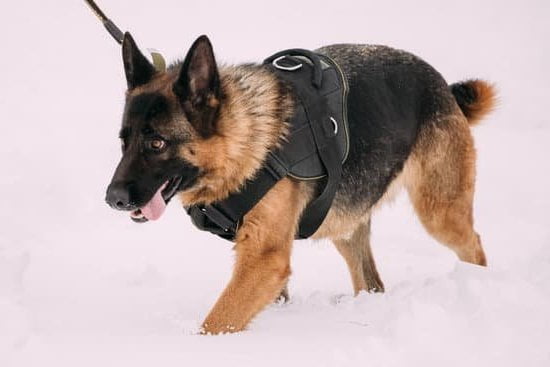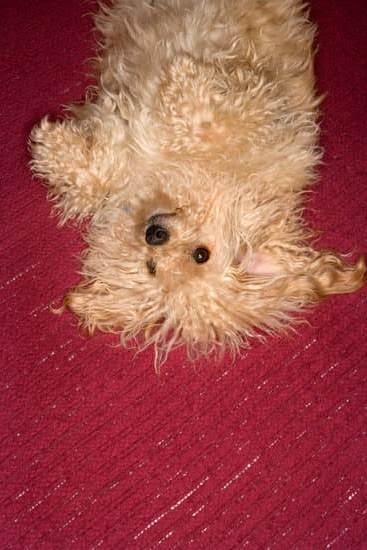Are you wondering how to train a dog to not be so hyper? Hyperactivity in dogs can be challenging for both the pet and the owner, but with the right techniques and training, it is possible to calm your furry friend down. Understanding the causes of hyperactivity in dogs is the first step towards addressing this behavior and helping your dog become more relaxed and well-behaved.
Hyperactivity in dogs can stem from various factors such as breed tendencies, lack of exercise, anxiety, or even boredom. In this article, we will explore the different reasons behind hyperactive behavior in dogs and provide you with effective strategies to train your dog to be calmer.
Identifying hyperactive behaviors in your dog is crucial in order to address them effectively. By understanding the specific signs of hyperactivity in your furry friend, you can tailor your training approach to meet their individual needs. Let’s delve into the various causes of hyperactivity in dogs and how they manifest through their behaviors.
Identifying Hyperactive Behaviors in Your Dog
Many dog owners struggle with hyperactive behavior in their pets, and sometimes it can be challenging to identify what constitutes hyperactivity in dogs. Identifying these behaviors is the first step towards addressing and managing your dog’s hyperactivity. Some common signs of hyperactive behavior in dogs include excessive barking, jumping on people, inability to settle down, and constantly needing attention or stimulation.
Excessive Barking
One of the most noticeable signs of hyperactivity in dogs is excessive barking. If your dog tends to bark incessantly at the slightest noise or movement, it could be a sign of pent-up energy and a lack of mental stimulation.
Jumping on People
Another common hyperactive behavior in dogs is jumping on people. While this may seem like an overly enthusiastic display of affection, it can also be a sign that your dog has excess energy that needs to be channeled into more appropriate outlets.
Inability to Settle Down
Hyperactive dogs often have difficulty settling down and relaxing, even after physical activity. They may constantly pace, search for things to do, or exhibit restlessness, making it challenging for both the dog and its owner to find moments of calm.
By understanding these behaviors as manifestations of hyperactivity, you can then begin implementing specific training techniques to address them and help your dog learn how to not be so hyper.
Establishing a Consistent Routine for Your Dog
Benefits of a Consistent Routine
A consistent routine is important in helping to calm a hyperactive dog. Dogs thrive on routine and structure, and when their daily schedule is predictable, they often feel more secure and less anxious. By providing your dog with a routine, you are giving them a sense of stability which can help reduce their hyperactivity.
Creating a Daily Schedule
One way to establish a consistent routine for your dog is by creating a daily schedule that includes regular times for feeding, exercise, playtime, and rest. This can help regulate your dog’s energy levels throughout the day and prevent them from becoming excessively hyper at certain times.
Implementing Training Sessions
In addition to daily activities, incorporating regular training sessions into your dog’s routine can also be beneficial. Training sessions not only provide mental stimulation for your dog but also help reinforce obedience and good behavior. When working with a hyperactive dog, it is important to keep training sessions short and engaging to prevent them from becoming overly excited.
By implementing a consistent routine for your dog that includes daily activities, training sessions, and rest times, you can effectively manage their energy levels and reduce their overall hyperactivity. This approach combined with positive reinforcement techniques can help train a hyperactive dog to be calmer and more well-behaved.
Providing Physical and Mental Stimulation
Dogs are naturally energetic animals, and without adequate physical and mental stimulation, they can become hyperactive. It is important to ensure that your dog gets enough exercise to release their pent-up energy. Depending on the breed, age, and health of your dog, the amount of exercise required may vary. A tired dog is a well-behaved dog, so providing regular walks, runs, or playtime in the backyard can help alleviate hyperactivity.
In addition to physical exercise, mental stimulation is also crucial in reducing hyperactive behaviors in dogs. Activities such as puzzle toys, training sessions, and interactive games can keep your dog’s mind engaged and prevent boredom-induced hyperactivity. Engaging your dog’s brain not only provides an outlet for their energy but also strengthens the bond between you and your pet.
Another effective way to provide mental stimulation is through scent work or nose work activities. Dogs have an incredible sense of smell and engaging them in activities that utilize this natural ability can be highly rewarding for them. This type of mental stimulation encourages focus and concentration while also promoting a sense of calmness. Engaging in both physical exercise and mental stimulation will go a long way in training your dog to not be so hyper.
| Stimulation Type | Description |
|---|---|
| Physical Exercise | Adequate exercise is essential to release pent-up energy in dogs. |
| Mental Stimulation | Puzzle toys, training sessions, interactive games, scent work activities to engage your dog’s mind. |
Positive Reinforcement Training Techniques
One of the key principles of positive reinforcement training is to reward your dog immediately after they exhibit the desired behavior. This could be in the form of treats, praise, or affection. For example, if your hyperactive dog stays calm when meeting a new person or another animal, you can reward them with a treat or verbal praise. Over time, your dog will learn that calm behavior leads to positive rewards.
Consistency is also crucial when using positive reinforcement training techniques. It’s important to reward your dog every time they display the desired calm behavior, as this helps reinforce the idea that being relaxed and composed is beneficial. With consistent positive reinforcement, your hyper dog will gradually learn to control their energy levels and maintain a sense of calmness in various situations.
A study published in the Journal of Veterinary Behavior found that positive reinforcement techniques were highly effective in reducing hyperactive behaviors in dogs. The research indicated that dogs responded well to rewards-based training methods and showed significant improvements in their overall behavior over time. This highlights the importance of incorporating positive reinforcement into your training approach when working on how to train a dog to not be so hyper.
| Positive Reinforcement Training Techniques | Key Points |
|---|---|
| Rewarding desired behaviors with treats, praise, or affection | Immediate rewards reinforce calm behavior |
| Consistent use of positive reinforcement | Reinforces the idea that being relaxed leads to rewards |
| Study findings on effectiveness |
Using Calming Tools and Techniques
If your dog is constantly in a state of hyperactivity, it can be helpful to utilize calming tools and techniques to help them relax. One effective tool for calming an overly hyper dog is the use of a thunder shirt or anxiety wrap.
These wraps provide gentle pressure around your dog’s body, which can have a calming effect similar to swaddling a baby. This can help to reduce anxiety and hyperactivity in your dog, especially during stressful situations such as thunderstorms or fireworks.
Another calming technique that can be beneficial for hyperactive dogs is the use of aromatherapy. Certain scents, such as lavender or chamomile, are known for their relaxing properties and can help to create a calm environment for your dog. You can use essential oils in a diffuser or spray diluted oil onto their bedding to help induce relaxation.
In addition to these tools, there are various techniques that you can use to calm your hyperactive dog. One effective method is deep pressure therapy, which involves applying gentle pressure to specific parts of your dog’s body to promote relaxation.
This can be done through massage or by using weighted blankets or vests specifically designed for dogs. It’s important to be patient and persistent when trying out different calming tools and techniques to find what works best for your individual dog.
Seeking Professional Help and Guidance
Sometimes, despite your best efforts, you may find that your dog’s hyperactivity is too overwhelming to handle on your own. In these cases, seeking professional help and guidance can be incredibly beneficial in learning how to train a dog to not be so hyper. Professional trainers and behaviorists have the knowledge and experience to assist you in addressing your dog’s hyperactivity effectively.
Here are some ways professional help and guidance can benefit you and your hyperactive pooch:
- Customized Training Plans: A professional trainer or behaviorist can create a customized training plan tailored to your dog’s specific needs, focusing on reducing their hyperactive behaviors through positive reinforcement techniques.
- Expert Insight: These professionals can provide valuable insights into understanding the underlying causes of your dog’s hyperactivity, allowing for a more targeted approach in training.
- Ongoing Support: Seeking professional help means having ongoing support as you work through training your dog. They can offer guidance, answer questions, and make necessary adjustments to the training plan as needed.
It’s important to do thorough research when selecting a professional trainer or behaviorist for your dog. Look for certified individuals with positive reviews and a strong track record in dealing with hyperactive dogs. Additionally, consider reaching out to local veterinary clinics or animal shelters for recommendations on reputable professionals who specialize in training energetic dogs. Remember, seeking professional help is not an admission of failure but rather a proactive step towards providing the best care for your furry companion.
Implementing Patience and Persistence in Training
Training a hyper dog to be calmer requires patience and persistence. It can take time for your dog to unlearn their hyperactive behaviors and replace them with more relaxed ones. Here are some tips on how to train a dog to not be so hyper:
- Be consistent: Consistency is key when training a hyper dog. Make sure that everyone in the household is on the same page when it comes to training and enforcing rules for your dog.
- Set realistic expectations: It’s important to have realistic expectations when training a hyper dog. Understand that change won’t happen overnight, and be prepared to put in the time and effort needed to see results.
- Use positive reinforcement: Positive reinforcement techniques, such as rewarding calm behavior with treats or praise, can help your dog understand what is expected of them. This will encourage them to repeat the desired behavior.
Remember that every dog is different, so it’s important to find the best approach for your specific pet. With patience, persistence, and consistency, you can train your hyper dog to be calmer and more relaxed.
Creating a Safe and Relaxing Environment for Your Dog
In conclusion, training a hyperactive dog requires patience, persistence, and dedication. Understanding the causes of hyperactivity in dogs is crucial in addressing the issue effectively. By identifying hyperactive behaviors in your dog, you can tailor your training approach to meet their specific needs.
Establishing a consistent routine, providing physical and mental stimulation, and using positive reinforcement techniques are essential in training a hyper dog. Furthermore, implementing calming tools and seeking professional help can also be beneficial in managing your dog’s hyperactivity.
It’s important to create a safe and relaxing environment for your dog to help reduce their hyperactivity. This can include providing a comfortable resting area, minimizing stressors in their surroundings, and ensuring they have access to toys or activities that promote relaxation. Consistency in training and patience are key when it comes to helping your dog overcome their hyperactive tendencies.
Overall, there are various strategies on how to train a dog to not be so hyper. With the right approach and commitment from the owner, it is possible to successfully manage and improve a dog’s behavior. By implementing the tips outlined in this article, owners can work towards helping their furry friends live calmer and more balanced lives.
Frequently Asked Questions
How Do I Train My Dog to Be Less Hyper?
Training a hyper dog involves providing plenty of physical and mental exercise. Engaging in activities like obedience training, interactive games, and frequent walks can help burn off excess energy. Consistent training, positive reinforcement, and establishing a calm routine are also essential for managing hyper behavior.
Can You Train a Dog to Be Less Energetic?
Yes, you can train a dog to be less energetic by providing regular exercise and mental stimulation. Redirecting their energy towards productive activities like agility training or scent work can help calm them down. Incorporating calming techniques such as massage, aromatherapy, or soothing music can also aid in reducing their overall energy levels.
How Do I Stop My Dog From Being Overexcited?
To stop a dog from being overexcited, it’s important to manage their environment and routine. Providing consistent rules and boundaries helps prevent overexcitement. Additionally, engaging in calming exercises like deep breathing or impulse control training can teach the dog to remain calm in stimulating situations. Avoid reinforcing the excitement by giving attention only when the dog is calm.

Welcome to the blog! I am a professional dog trainer and have been working with dogs for many years. In this blog, I will be discussing various topics related to dog training, including tips, tricks, and advice. I hope you find this information helpful and informative. Thanks for reading!





